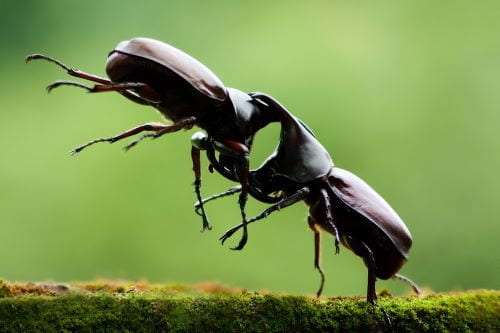Human development, land conversion, fire and storms are causing the forests worldwide to become increasingly fragmented, to the degree that 70% of the Earth’s remaining forest is within 1 kilometre of a forest edge today. The world’s most intact forest landscapes are found in the tropics, but fragmentation of tropical forests is predicted to accelerate over the next decades.
read more
Resilience to environmental change depends on mating strategy in Borneo dung beetles – new study by ASE Asst Prof Eleanor Slade
Global study of world’s most abundant creatures published today in Nature
What is the most abundant animal on the planet? Some may guess mice, or perhaps ants. A simple Google search will give you the answer – it’s nematodes, small worms also called eelworms. There are 440 billion of them and they exist in all of the Earth’s ecosystems (notably in soil, but also in water and as parasites in animal bodies). Still, because of their microscopic size most of us have never seen, and will never see, one. But they play a critical role in the cycling of carbon and nutrients in ecosystems, and are essential to understanding biological activity in soil. Read more



